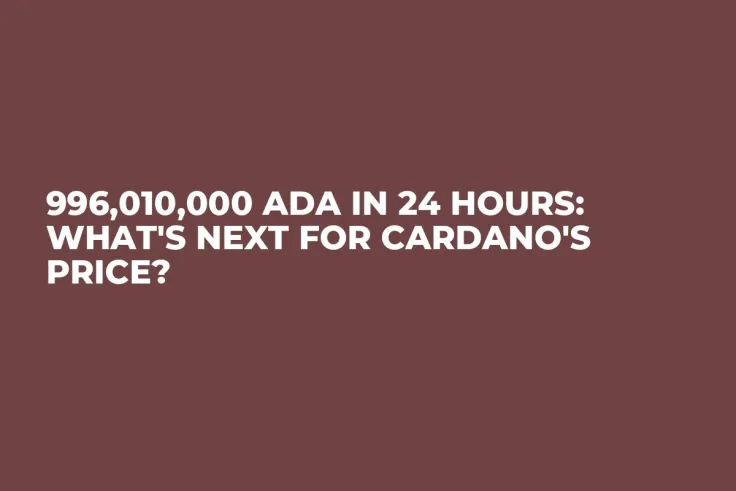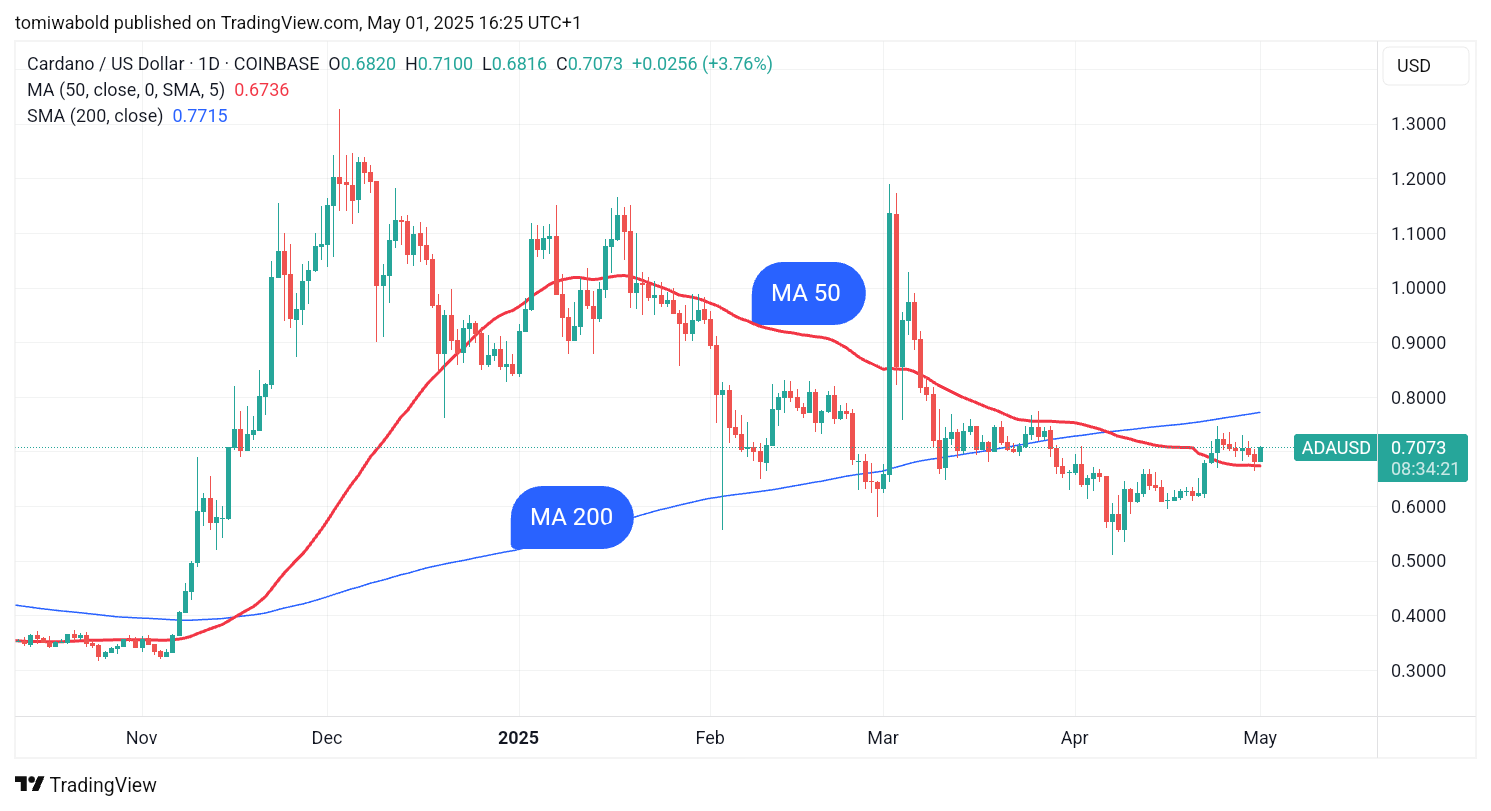
Disclaimer: The opinions expressed by our writers are their own and do not represent the views of U.Today. The financial and market information provided on U.Today is intended for informational purposes only. U.Today is not liable for any financial losses incurred while trading cryptocurrencies. Conduct your own research by contacting financial experts before making any investment decisions. We believe that all content is accurate as of the date of publication, but certain offers mentioned may no longer be available.
Cardano (ADA), the ninth-largest cryptocurrency by market capitalization, is attracting market attention after logging nearly one billion ADA in trading volume over the past 24 hours. According to CoinMarketCap data, 996,010,000 ADA changed hands as the crypto market showed signs of recovery in the early Thursday session.

At press time, ADA was up 3.94% in the last 24 hours to $0.703. The ADA price has slowed over the last seven days, with five out of six days in red, hence, the current rebound remains significant. ADA reached lows of $0.666 on Wednesday, after which it rose to $0.709 early Thursday.
Presently, ADA is trading between its 50-day and 200-day simple moving averages at $0.674 and $0.772, a zone that has now become a battleground for bulls and bears.
A decisive close above the daily SMA 50 resistance could open the door to a rally toward $1, while a break below the daily SMA 200 may signal renewed downside pressure with targets at $0.60 and $0.51.
Investors turn to macroeconomic data
The broader crypto market is trading in the green after an earlier sell-off following reports that the U.S. economy fell into contraction in the first quarter and inflation readings were flat in March. As reported, the Federal Reserve's preferred inflation gauge showed a strong increase for the quarter but was practically unchanged in March.
The Labor Department said on Thursday that initial jobless claims rose to 241,000 last week. Dow Jones polled economists, and they expected 225,000 for that period. This elevates the stakes for Friday's nonfarm payrolls report since other economic data has deteriorated.
With the Federal Reserve meeting next week (May 6-7), there is considerable anticipation that economic contraction might prompt the central bank to decrease interest rates later this year. While traders continue to price in virtually no likelihood of an interest rate cut at the next Fed meeting, they anticipate the central bank to start easing in June and a total of four cuts by the end of the year.


 Dan Burgin
Dan Burgin Vladislav Sopov
Vladislav Sopov U.Today Editorial Team
U.Today Editorial Team